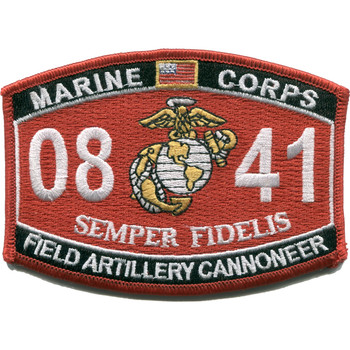Description
Field Artillery Crossed Cannons Canonades Patch (U.S. Army) 4.0" x 2.5" Embroidered Patch with Iron-On Backing
Superior Materials: Made with premium polyester thread and durable twill fabric, ensuring long-lasting color and strength.
Advanced Embroidery Technology: Crafted using the most advanced embroidery machinery, guaranteeing intricate detail, sharp lines, and consistent quality every time.
Easy Iron-On Application: Features a heat-activated adhesive backing for quick, no-sew attachment. Simply position, iron, and press for a secure bond.
Versatile Use: Perfect for personalizing jackets, backpacks, uniforms, or any fabric surface that needs a touch of personality.
Durable and Washable: Designed to withstand everyday wear and occasional washing without fading or fraying.
Formations & Origins
The Field Artillery branch of the United States Army traces its origins back to the Continental Army in 1775. From the earliest days of the Revolutionary War, artillerymen brought devastating firepower to the battlefield, helping to secure American independence. Over time, Field Artillery became its own distinct branch, tasked with providing indirect fire support to infantry and armored units. The iconic Crossed Cannons insignia symbolizes the branch’s long heritage, depicting two crossed field guns that hark back to Civil War-era artillery. This emblem has become synonymous with the thunderous might and precision of artillery soldiers, often called “Red Legs” for the scarlet trim traditionally worn on their uniforms.
Notable Commanders
Throughout history, many legendary commanders have emerged from Field Artillery. One early figure was Thomas “Stonewall” Jackson, whose nickname originated during his time leading artillery units. In the 20th century, General Maxwell D. Taylor, an artillery officer, rose to prominence commanding the 101st Airborne Division in World War II and later serving as Chairman of the Joint Chiefs of Staff. Artillery officers are known for their expertise in combined arms operations, mastering coordination between ground forces and fire support.
Major Campaigns/Operations
Field Artillery has been vital in nearly every American conflict. From the battlefields of the Civil War and World War I, where artillery barrages shattered enemy trenches, to World War II’s rapid mobile warfare, artillery units shaped the outcome of battles from North Africa to Europe. In Korea and Vietnam, artillery firebases provided crucial support in difficult terrain, delivering relentless bombardments and defensive fires. During Desert Storm, Iraqi Freedom, and in Afghanistan, artillery adapted to modern warfare with precision-guided munitions and highly mobile rocket systems, continuing to dominate the battlefield.
Specialized Role/Equipment
The primary role of Field Artillery is indirect fire support: striking enemy targets beyond direct line of sight. Equipment ranges from towed howitzers like the M777 to self-propelled guns such as the M109 Paladin, alongside rocket systems like MLRS and HIMARS. Fire direction centers, forward observers, and survey teams collaborate to calculate and deliver accurate, overwhelming firepower. Artillerymen train extensively to integrate their fires with infantry, armor, and air support, ensuring decisive effects in complex, fast-moving battles.
Acts of Heroism
Artillery units have a storied history of bravery. In the Battle of the Bulge, Battery B of the 110th Field Artillery held its ground under intense German attack, firing until the last moment and sacrificing many men to slow the enemy advance. In Vietnam, firebases like Ripcord endured direct assaults where artillerymen fought hand-to-hand, defending their guns at great personal risk. More recently, HIMARS operators have executed critical fire missions in support of special operations, with commanders describing their precision and timing as “decisive.”
Legacy & Notable Achievements
Known as the “King of Battle,” Field Artillery delivers unparalleled destruction and precision. The Crossed Cannons emblem is a badge of honor worn by generations of artillerymen who have shaped the battlefield with their skill and sacrifice. Today, the branch continues to innovate with drone integration, AI targeting, and future technologies like railguns and hypersonics. Wearing the Crossed Cannons means upholding a tradition of thunderous firepower that has supported American warriors for centuries and will continue to do so into the future.
1 Review
-
FT Sill Artillery Cannons
Awesome Quality, one of many going on a Veteran Quilt my wife it making me





